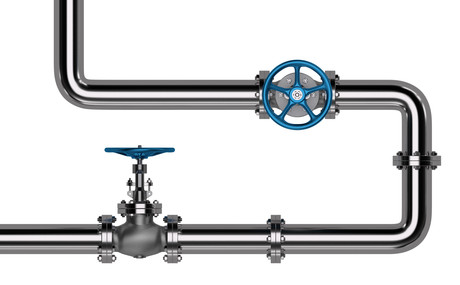Harnessing pipeline power

Eliminating turbulence can save as much as 95% of the energy required to pump fluid through a pipe.
Current estimates say that about 10% of global energy consumption is used to move fluid through pipelines. While the food industry does not move volumes on the same scale as the oil, water and gas industries, a lot of fluid is pumped in the food and beverage industry.
If fluid moving in the pipe is turbulent there is a significant increase in frictional drag, which means more energy is required to move the fluid.
Traditionally, turbulence in pipes was assumed to be stable, and efforts to save energy costs focused on reducing the magnitude of the turbulence rather than extinguishing the turbulence completely.
Researchers at the Institute of Science and Technology Austria (IST Austria), including Professor Björn Hof, Jakob Kühnen and Baofang Song, have established that turbulent flow can be transformed to a laminar flow and remain laminar unless it is disturbed again. Laminar flow, where a fluid flows in parallel layers which do not mix, is much more energy efficient as there is much less frictional drag.
“Nobody knew that it was possible to get rid of turbulence in practice. We have now proven that it can be done. This opens up new possibilities to develop applications for pipelines,” explained Jakob Kühnen.
The secret lies in the velocity profile — in the variation of the flow velocity when looking at different positions in the pipe’s cross-section. The flow is fastest in the middle of the pipe while it is much slower near the walls. By placing rotors in the flow that reduced the difference between the fluid in the centre and that close to the wall, the researchers managed to obtain a ‘flatter’ profile. For such flow profiles the processes that sustain and create turbulent eddies fail and the fluid gradually returns to smooth laminar motion and it remains laminar until it reaches the end of the pipe. Another way to obtain the flat velocity profile was to inject liquid from the wall. Yet another implementation of the idea of a flat velocity profile was a moving part of the pipe: by moving the walls quickly over a stretch of the pipe, they also obtained the same flat profile that restored the laminar flow.
The group has already registered two patents for their discovery. However, turning this proof-of-concept experiment into a system that can be used in actual pipelines will require some more efforts in development. So far, the concept was proven for relatively small velocities, but for use in pipelines, an application working at larger velocity will be necessary. In computer simulations, however, the flat velocity profile always led to a successful elimination of turbulence, which is very promising for future developments.
“In computer simulations, we have tested the impact of the flat velocity profile for Reynolds numbers up to 100.000, and it has worked absolutely everywhere. The next step is now to make it work also for high speeds in the experiments,” said Björn Hof.

The group’s work has been published in Nature Physics.
Six beverage trends predicted for 2026
Demand for customisation, 'protein-ification' and sustainable storytelling are some of...
Making UHT processing less intensive on energy
A nutritional beverages company was seeking a more sustainable way to produce UHT beverages using...
Tasty twist for chocolate alternatives
Food scientists develop two novel flavour-boosting techniques to transform carob pulp into a...








